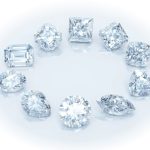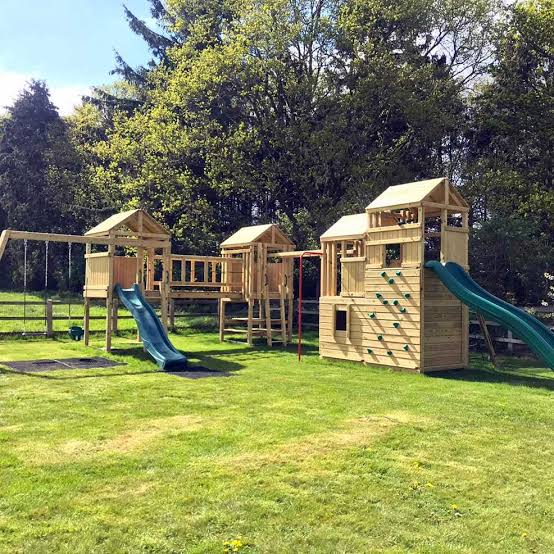Climbing frames have been a staple of public parks, school playgrounds, and back yards for many years, with plenty of design choices available for this type of outdoor play equipment.
The most common materials for climbing frames are wood and metal, but wood is the traditional preference due to its timeless natural appearance, durability, and eco-friendliness.
Even within the category of wooden climbing frames, there are different styles to choose from – as most wooden play equipment is made using either round wooden poles or square wooden beams for the frame and structural elements.
When choosing between these two types of wooden structures, you’ll need to know what sets the shapes apart to decide which climbing frame style would be best for you.
So, keep reading to discover the differences between round poles and square-cut timber!
Wooden climbing frame with round poles
Some people prefer the softer and more subtle look of rounded posts, as they typically have a smaller footprint than square-cut beams.
Round wooden poles are essentially complete younger trees with the bark stripped away. These smaller trees create slimmer heartwood posts, with a surface layer of sapwood that dries out and shrinks quickly.
As this type of timber is more sensitive to atmospheric changes, it will expand and contract further in wet or warm weather, with more significant cracks resulting from these stresses.
However, developing V-shaped cracks in the centre is a normal characteristic of round wood poles – once the core of the pole has dried out, the crack should close.
Even if the cracks in round poles look surprisingly wide or long, the dimensions of each pole should allow it to maintain its integrity, as they are thick and strong enough to remain sturdy.
Of course, as with any wooden outdoor structures, it’s recommended to sand down splinters and rough patches on the surface and treat the timber with preservatives at least once a year to prevent infestation and decay.
Climbing frame with square-cut timber
Square wooden posts have a larger surface area with neater joins than their round counterparts, giving them a reputation for being generally more robust.
Square-cut wood, or dimensional timber, comes from older and larger trees. This allows the production of bigger, longer, and denser beams, which go through more cutting and planing stages than round wood.
Although there may be less heartwood, there should be fewer knots and a more even distribution of stresses, helping the dense and heavy timber posts to stay strong.
Like any wood, square-cut timber will still shrink and expand depending on temperatures and moisture levels, but it usually doesn’t split as much as round wood.
It’s more common for dimensional timber to gradually develop hairline cracks, which are less noticeable and shouldn’t affect the structural integrity of the climbing frame.
Again, like all wood, square-cut climbing frame posts should still be maintained with annual preservative treatments and smoothed with sandpaper when needed to protect the timber against damp and pests.
Which type of wooden climbing frame is better?
Round wood and square wood posts for climbing frames come from different parts of trees, and both undergo pressure treatments with environmentally friendly preservatives.
However, round wood has fewer stages of preparation, aside from planing the smooth round edges and pre-drilling any necessary holes for construction. Square-cut wood requires further manufacturing procedures, which is why the price is often higher than round wood designs.
Though both types will likely need top-up preservative treatments over time, round wood can require more maintenance to keep the rounded surfaces smooth, and may feel a little less robust in comparison, as the poles will be more lightweight than dense square beams.
All of that said, many of today’s wooden climbing frames use a combination of round and square frames for an attractive, adaptable, and stable final product – giving you and your family the best of both worlds.
For example, TP climbing frames from the leading brand TP Toys use round poles for swing frames on smaller models to help make them more compact, and square-cut frames in larger structures for extra stability.
Made from FSC-certified European wood – approved as sustainably sourced by the Forest Stewardship Council – they are kiln-dried and pressure-treated, with 5 year guarantees against wood rot.
Allowing you to buy with confidence, whether you choose round, square, or a mix of both!











